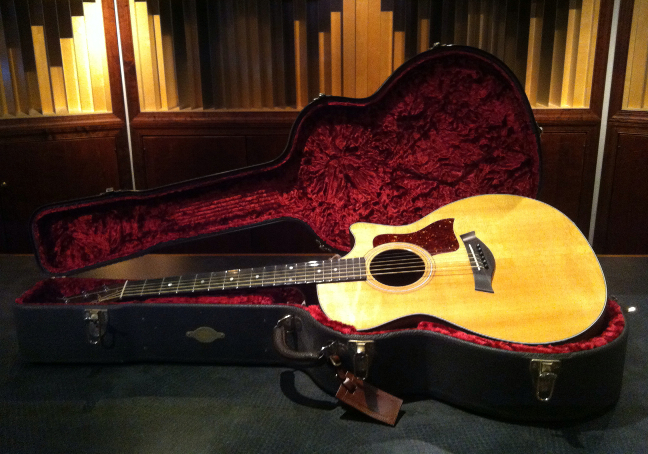Session Files: An Accidental Scoring Gig

Or… How to get a bass track without a bass!
I literally bumped into a scoring commission the other day. As I was returning from my lunchtime walk around the studio complex I ran into a video producer/editor friend who did a double-take and said, “Oh, THERE you are. I need a score produced and I was wondering if you could help me with it?” Hmmm… I asked for details. She was producing a story about a public figure from the Civil War period and wanted some period-style music. I warned of the very small part the guitar played in the music history of that period in America but she really wanted acoustic guitar. I was hooked. We settled for “rustic” as the operant term for my efforts and decided on four “cues” or motifs to be produced. She gave me the technical details and a very short delivery deadline. Because we didn't have time to clear copyrights, I suggested we choose three hymns and a folk song and she agreed. I was off! After diving into hymn history and checking dates of publication, I found a pair of period hymns I already knew well enough to arrange quickly and another one I could learn. The folk song was an ancient celtic folk song that I dug out and dusted off from my repertoire. I also decided on a mix of solo fingerstyle and ensemble arrangements in order to be able to quickly supply the cues.

I keep a guitar at the studio for times like this, a Taylor 314kce with koa sides and a sitka spruce top. At the end of the production day I was able to dive right into working up, arranging, and recording the first and most important cue. First, I put together the same vertical, seven-inch spaced, near co-incident pair of AKG C451B mics I used on a previous session written up here. I placed the rig in the control room at the end of the console so I could easily engineer and play at the same time. I pointed the mics at the joint between the neck and body at a distance of about fourteen inches. The control room I'm based in is a properly designed, live-end dead-end design. All equipment with fans has been banished to the adjacent machine room to reduce the ambient noise in the monitoring environment so I didn’t have to deal with background noise or bad acoustics. While recording, I monitored on AKG K240m and Sony MDR-7506s headphones, alternating just to check the recordig on the contrasting high-end pictures. Once I had the mic array rigged and the lines checked I left everything set up by the console for the next two days so I could record without set-up time.

For the first hymn I went with an ensemble arrangement: two strummed rhythm guitars, a bass, a melodic lead line, and a melodic harmony line. I recorded the rhythm guitars first, the melodic lines next, and the bass last. That’s straightforward enough, except I didn’t have a bass handy at the studio and had a nearly immediate turnaround deadline for this first piece. From experience I knew that wouldn’t be a problem for a rustic arrangement. First, I recorded the bass line, playing it on the guitar. Next I used the harmonizer plug-in in Nuendo to pitch the guitar/bass line down an octave. At that point it sounded very much like an acoustic bass guitar – in fact, like a Taylor bass with a little less bass. As I would with a real bass, I compressed the signal a bit for sustain and trimmed a bit of the midrange with an EQ. I added some subharmonic content with the Waves R-Bass plug-in to fill out the bottom end and voile’! I had a bass. After a mix, song number one was delivered the next morning. It was approved by the producer and was slotted into place as the finale’ for the video production.
I worked up, performed, edited, and mixed the rest of the songs in my spare time during the next couple of days and delivered them to the producer’s server right in time to be snapped up and dropped into the project as it was edited. The fingerstyle arrangements were performed in as close to a single pass as was possible, with only a few punched-in fixes. Because there was zero run-up time for this product, meaning zero rehearsal time, I did have to rely on my editing skills a little more than I was comfortable with in order to fix timing errors, but in the end the product sounded fine. The folks in show management and network management viewed a rough edit of the piece with the music and enthusiastically approved it with no changes. Producer happy, management happy - I'm happy! A couple of days later the whole video project was returned to me to receive a final mix in stereo for air. The piece aired the next day and the show offered my songs as bonus downloads from their website. I had to do a little negotiating with the IT department to get the MP3 compression level right but we finally sorted it out. When the piece aired I was gratified to receive a shout-out from the host of the show on national TV for my score! Yahoo! It's always nice to get a little exposure.

= =
=




